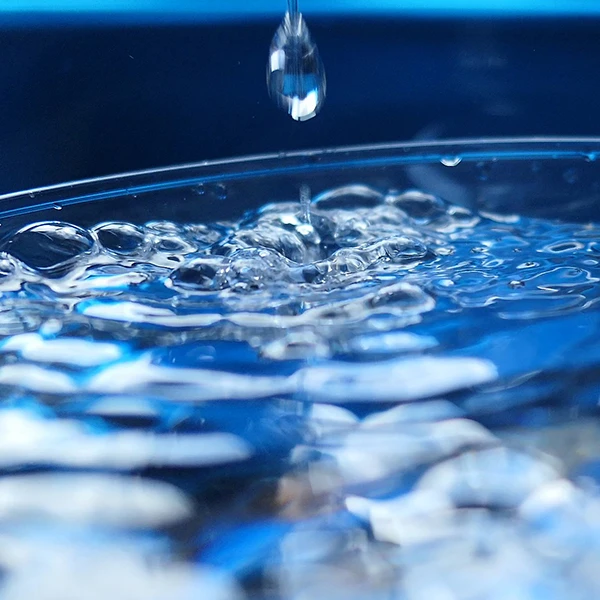การทดสอบคุณภาพน้ำด้วยคัลเลอริมิเตอร์

ดวงตาของมนุษย์เป็นเครื่องมืออันมหัศจรรย์ที่สามารถทำให้เกิดผลอันน่าอัศจรรย์ได้ แต่ความสามารถของมันไม่ได้ไร้ขีดจำกัด โดยเฉพาะอย่างยิ่งเมื่อแยกแยะระหว่างสีและเฉดสีที่มีลักษณะใกล้เคียงกันมากหนึ่งต่ออีกคนหนึ่ง สำหรับ การใช้งาน การวัดสี ด้วยน้ำ คัลเลอริมิเตอร์จะให้ระดับความแม่นยำสูงสุดที่เป็นไปได้
บางคนก็จะบอกว่า “แต่น้ำใสนะ.. ทำไมคุณถึงอยากวัดมันล่ะ” เหตุผลหนึ่งก็คือเพราะว่าสิ่งเจือปนในน้ำดื่มบรรจุขวดอาจทำให้สีของน้ำเปลี่ยนไปเล็กน้อยเกินกว่าที่บุคคลจะแยกแยะได้ อย่างไรก็ตาม เครื่องมือวัดสีที่แม่นยำจะมองเห็นความแตกต่างได้อย่างรวดเร็ว
ตัวอย่างเช่น ในโรงงานบรรจุขวดน้ำ พนักงานควบคุมคุณภาพจะตรวจวัดตัวอย่างน้ำที่พวกเขารู้ว่าบริสุทธิ์ ข้อมูลจากการวัดนั้นจะถูกจัดเก็บไว้ในหน่วยความจำของคัลเลอริมิเตอร์ เมื่อทำการตรวจวัดน้ำชุดอื่นๆ เครื่องมือจะแจ้งให้ผู้ใช้ทราบหากสีมีความแปรปรวน และแจ้งเตือนพวกเขาถึงความเป็นไปได้ที่จะเกิดการปนเปื้อนบางประเภท
อุปกรณ์เหล่านี้ยังสามารถใช้ในการวัดน้ำเสียเพื่อกำหนดระดับสิ่งเจือปนที่มีอยู่ สำหรับงานนี้ ช่างเทคนิคมักตั้งค่าอุปกรณ์ให้เป็นดัชนีสี APHA เพื่อใช้เป็นมาตรฐานการวัดสี
APHA ย่อมาจาก American Public Health Association และดัชนีที่พวกเขานำมาใช้นั้นถูกสร้างขึ้นในปี 1892 โดยชายชื่อ A. Hazen ซึ่งเป็นนักเคมี ดัชนี APHA ทำให้สามารถวัดสิ่งเจือปนในน้ำเสียได้เป็นครั้งแรกโดยการเปรียบเทียบกับสารละลายพิเศษที่มีแพลตตินัมโคบอลต์
คัลเลอริมิเตอร์หลายรุ่นเป็นแบบมือถือและพกพาได้ ทำให้ผู้ใช้สามารถนำไปยังพื้นที่ต่างๆ ภายในโรงงานบรรจุขวดหรือบำบัดน้ำได้อย่างง่ายดาย ใช้งานง่ายแม้สำหรับผู้ใช้ครั้งแรกและมีเมนูและโปรแกรมมากมายที่เหมาะกับงานการวัดจำนวนมาก
แต่ไม่ใช่แค่ในการวัดน้ำเท่านั้นที่เราพบเครื่องมือเหล่านี้ นอกจากนี้ยังใช้ในการตรวจวัดของเหลวอื่นๆ เช่น ยา สารละลายเคมี ผลิตภัณฑ์ เครื่องดื่มและอื่นๆ อีก มากมาย ในกรณีเหล่านี้ทั้งหมด จะแจ้งเตือนผู้ใช้ถึงความแปรปรวนของสีจากมาตรฐานที่ตั้งโปรแกรมไว้ล่วงหน้า
Konica Minolta นำเสนอกลุ่มอุปกรณ์ตรวจวัดสีขั้นสูงแบบครบวงจรที่ใช้ทั่วโลกในห้องปฏิบัติการ โรงงานผลิต และศูนย์ทดสอบ เมื่อต้องการอ่านค่าสีอย่างแม่นยำ
หากคุณต้องการทราบเกี่ยวกับ เทคโนโลยีการวัดสี ของ Konica Minolta หรือผลิตภัณฑ์อื่นๆ ของเรา โปรดโทรหาเราที่ +65 6895 8685 หรือติดต่อเราผ่าน ทางเว็บไซต์ ของเรา
เกี่ยวกับผู้แต่ง: Alan Chua
Alan Chua เป็นผู้ช่วยผู้จัดการของ Konica Minolta Sensing Singapore Pte Ltd. สำเร็จการศึกษาจากภูมิหลังด้านวิศวกรรมไฟฟ้า โดยเขาเกี่ยวข้องกับการขาย การสัมมนา การฝึกอบรม และการฝึกสอนในด้านการจัดการแสงและสีเป็นหลัก ด้วยประสบการณ์ 18 ปีในการจัดการและจัดหาโซลูชั่นสำหรับการใช้งานในอุตสาหกรรมต่างๆ เขายังจัดสัมมนาและเวิร์คช็อปเรื่องสีเพื่อให้ความรู้แก่อุตสาหกรรมเกี่ยวกับเทคโนโลยีเครื่องมือวัดและวิทยาศาสตร์สีอีกด้วย เขายังได้รับเชิญให้เป็นวิทยากรในงานสัมมนา The Academy of Fashion Professions (TaF.tc) ซึ่งเป็นหน่วยงานฝึกอบรมของ Textile & Fashion Federation (TaF.f.f) เขายังเป็นวิทยากรในการประชุม Color Cosmetics Conference

